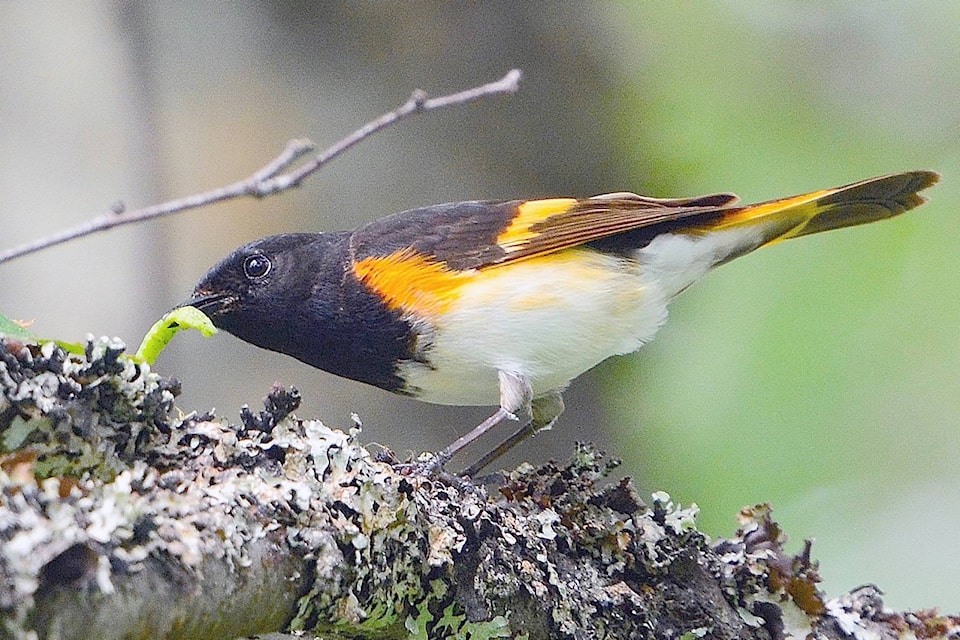In Canada and the USA, the warbler family is represented by almost 60 species.
Seventeen of these small, usually brightly coloured species have been recorded in the West Kootenay region.
This family is better represented in the hardwood forests of eastern North America.
I recall birding one morning in Manitoba a few years ago, when we had twenty different species of warbler before lunch.
Warblers are insect eaters. Most are taken from the leaves or branches of trees but some species are also quite adept at picking them from the air. Since insects are in short supply in the Canadian winter, warblers normally do not remain here in the winter.
Many Canadian warblers travel great distances to reach their winter homes in Central and South America. It is hard to imagine that a Yellow Warbler, for example, which may nest as far north as the shores of the Arctic Ocean, will fly several thousand kilometres to Central and South America in order to find suitable feeding habitat.
One of the most amazing flights is that undertaken by the Blackpoll Warbler. This species, which breeds in the northern Boreal forest, congregates in coastal areas of the northeastern United States in September. When they deem weather conditions to be suitable, they leave, en masse, at nightfall.
Their route takes them in a southeasterly direction out over the Atlantic Ocean. They fly over water until they reach the Caribbean or the northeast coast of South America. Because of their small size and their feeding habits, warblers often go unnoticed.
At about 10 cm in length they are one of our smallest birds. Since much of their food is taken directly from leaves, they often forage well inside the foliage. If you do catch a glimpse of one, they rarely stay in one place long. By the time you pick up your binoculars for a closer look, they’ve moved to the next branch.
By far the most prominent colour among warbler species is yellow. The previously mentioned Yellow Warbler, quite common in the Nakusp region, is almost completely yellow, as is the Wilson’s Warbler. Other common warblers in our area include the Yellow-rumped Warbler, Common Yellowthroat, Townsend’s Warbler, MacGillivray’s Warbler and American Redstart. The colour yellow features prominently in the plumage of all these species except the American Redstart. The unmistakable redstart is black, white and orange.
The plumages described here refer only to the males. As is the case in a number of bird families, female have more subdued colouration.
Families that show such a difference are generally those that build open nests and those in which males do not share incubation duties. A bright yellow bird sitting on a nest would be too easy for predators to detect.
Most of our warblers arrive here in May or early June. Nesting begins soon after arrival and by early July the young birds are ready to leave the nest. Warblers now become even harder to see. Once the young leave the nest, there is no longer any need to defend territory, hence the males stop singing.
It is their song that helps birders to locate them in the first place.
Furthermore, with young to feed and protect, they don’t want to draw attention to themselves.
